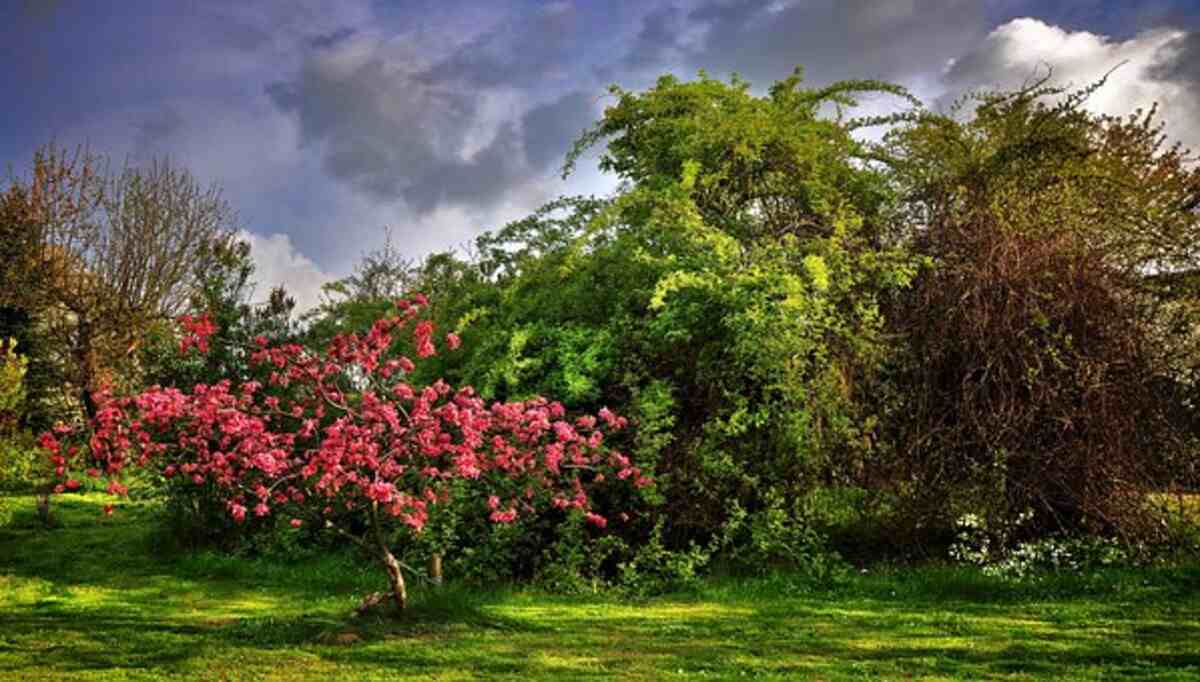Garden paradise, also known as the Persian paradise garden, is an Old Iranian style of symmetrical and formal garden. These gardens are often enclosed and feature a central pond. There are many garden paradises, but the most traditional style is a four-fold design, with the park being divided into four parts, one of which is the center pond.
Origins
The idea of a garden as heaven dates back to ancient times. The earliest description of a primordial garden appears in Sumerian texts. The word “paradise” originates from the Old Persian word pairidaeza, meaning “a walled enclosure with a park.” Variations of the word have been used in Greek, Hebrew, and Aramaic texts.
The Garden of Eden was modeled after the Book of Genesis garden. It was surrounded by a wall and had four water channels. It was a lush, fragrant paradise filled with aromatic plants and protected from the midday sun. It was often accompanied by birdsong.
Meaning
The Garden of Eden, also known as paradise, is a biblical place that represents the first inhabited nature. This beautiful place is lush and leafy and is protected by God from evil. In the biblical account, God created the Garden of Eden and placed a tree called the Tree of Life. This story coincides with various aspects of the Sumerian Genesis. In the Book of Genesis, the Garden of Eden has four sides, with a central spring feeding four rivers that flow into the world beyond. This paradise would be rich with flowing water and material delights.
Initially, the word was a Greek word meaning “orchard” or “hunting park.” The Septuagint translated it to the “Garden of Eden” and was adopted by the Abrahamic religions. Nevertheless, the word was borrowed from other languages and re-introduced in English by the Middle Ages.
Influence
The concept of a garden paradise is derived from the Garden of Eden. The Garden of Eden is described in the Book of Genesis as a four-fold place where the four rivers flow from a central spring into the world beyond. The world beyond is called Jannah and is described as a land abundant in soaking water and earthly delights. Interestingly, the concept of a garden paradise predates Abrahamic religions.
In the early modern period, botanic gardens were viewed primarily as a means to provide doctors with medicine. However, in the seventeenth and eighteenth centuries, as Europeans traveled the world, interest in exotic plants spread to all levels of society. As a result, gardens became a fusion of diverse botanical histories. Some plants were imported from distant lands, while others were bred in the gardens. Ultimately, the garden became a cultural symbol, representing humankind’s interdependence.
Mughal gardens
Visit Mughal gardens to appreciate the beauty of nature and enjoy the tranquility they afford. The gardens have natural rock and woodland backgrounds. They feature a hammam built by Jehanra Begum in the 17th century. An earlier baradari’s ruins still stand on a spring’s site.
The Mughal gardens still maintain the spirit of place, including their complex terraces and water systems. They are often shaped and landscaped to be picturesque and contain various plant species that provide shade, fragrance, and a cooling breeze. The gardens have significant historical evidence, including tents and carpets.
Symbolism
A garden is a natural place that has several symbolic meanings. It is typically considered feminine and represents fertility. It is often adorned with fruit trees, fountains, and domesticated animals. It is also the home of various deities, including Juno, Minerva, and Venus. The beauty of a garden promotes romantic feelings.
Evergreen plants are a typical symbol of immortality. Spring bloomers, on the other hand, signify the resurrection of Christ. Other plants, such as medicinal herbs, symbolize faith’s healing power. They also tell the forgiveness of sins. The church fathers and medieval Christian thinkers believed that Christ was the ultimate healer, but later, the Virgin Mary became a vital healer.
Design
To create a backyard paradise, look to nature for inspiration. You may want to create a secluded nook with a chirping bird or a garden full of honeybees and floating butterflies. Using thick bushes, blooming flowers and trees can help attract these desirable creatures. You may also want to include plants that serve as nesting places for birds and other insects. Make sure to choose plants that thrive in cool weather.
A garden with a central water feature will also be peaceful and calming. Adapting plants to climates in different parts of the world will help you achieve this.

